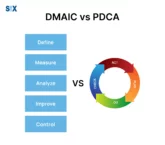Defining and Optimizing Value-Added vs Non Value-Added Activities
Value Added and Non Value Added concepts are pretty straightforward on the surface, truly understanding the differences can impact efficiency, waste reduction, and customer satisfaction. For any organization looking to drive continuous improvement, mastering these core concepts is essential. Key Highlights Value Added vs Non-Value Added Properly categorizing process elements enables organizations to optimize efficiency, […]


























